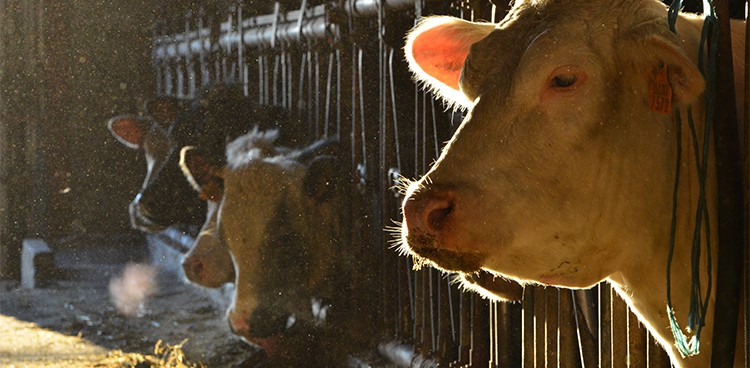
You’re thirsty. You make a pit-stop into the closest convenience store to grab something to alleviate the desert atmosphere that is your mouth. You pull out a few wadded up bills and coins from your pocket and search for the cheapest option. Well, if you live in the United Kingdom, that option may very well be a bottle of milk. Supermarket price wars, decreased export, trade bans, and overproduction have led to a sharp fall in milk prices across the United Kingdom as dairy farmers struggle to stay in business. Numerous news sources report that milk-drinkers can now purchase milk in the UK for about the same amount that they can dig out from under the couch cushions—the lowest price milk has sold for in years. Currently, four-pint cartons (half-gallons) of milk are selling for between 1 and 1.39 British Pounds, the equivalent to about $1.50–$2.00. One of Britain’s biggest grocery stores, Asda, has dropped the price even lower to just 89p (about $1.35).
There are a few different reasons for these plummeting prices. Fewer orders from China and a trade ban with Russia result in less exported milk and therefore more UK milk staying in-country. Also, recent good weather has resulted in more milk production than usual which means that the milk supply is outweighing milk demand. This increased supply lets consumers buy milk at much lower prices since there is so much of it (almost literally) flooding the market. Additionally, Britain’s four big grocery stores–Tesco, Morrison’s, Sainsbury’s and Walmart’s Asda–have been slashing prices in attempts to maintain the market share in what is a very competitive supermarket space.

Photo Credit: The Independent
While cheap milk makes consumers’ wallets happy, oftentimes what’s good for consumers spells hardship for farmers. The decreased prices of milk have resulted in some UK dairy farmers pulling out of the industry altogether. In fact, according to The Independent, about 9,960 dairy farmers have left the industry since 2002, sixty of whom left last December alone due to the falling prices. The current number of dairy farmers in the UK numbers less than 10,000, and the President of the National Farmer’s Union, Meurig Raymond, warns that at this rate, the number of dairy farmers in the UK will drop to below 5,000 within the next decade.
Unfortunately, the worldwide and local dairy market volatility has no certain end date. Parliament and committees like the Environment, Food, and Rural Affairs Committee have been brainstorming ways to protect dairy farmers from such problems in the future. One idea suggests looking into opportunities for increased global export of milk. A European Union review of protections against very low dairy prices is also proposed—similar to the insurance that protects dairy farmers in the United States during “bad” years. Furthermore, other members of Parliament have urged UK dairy farmers to consider taking matters into their own hands by creating producer organizations in order to increase power in the market.
According to Jim Paice, chairman of a dairy co-operative based in Glasgow called First-Milk, if milk prices continue to decrease, “hundreds of UK dairy farmers are unlikely to find a home for their milk this spring.” Farmers are surely already feeling the squeeze.
Feature Photo Credit: Spigoo via Compfight cc


